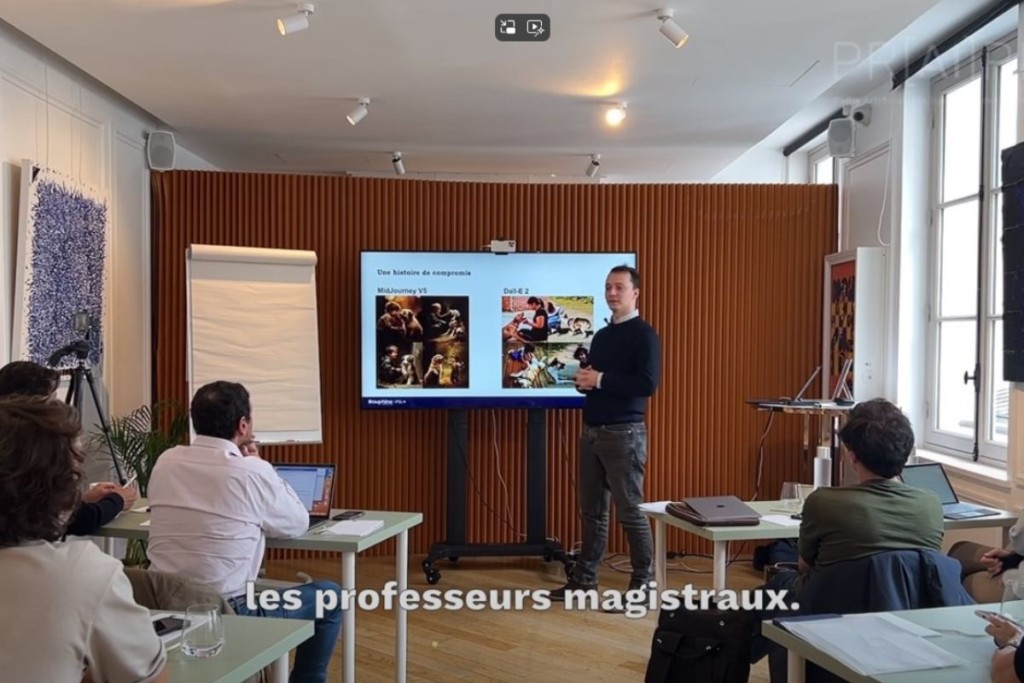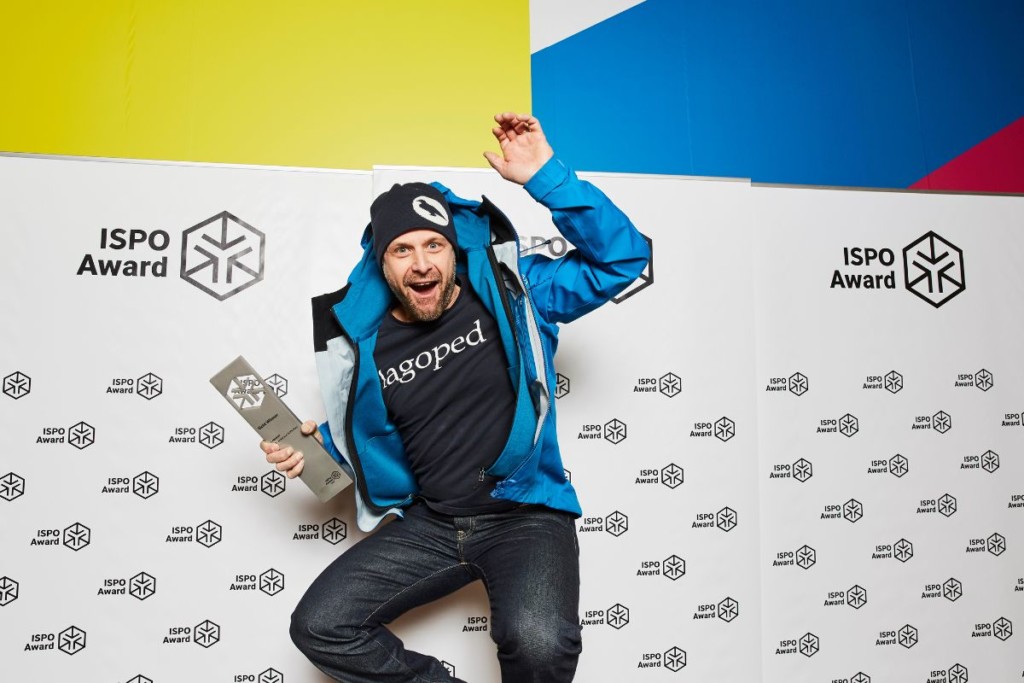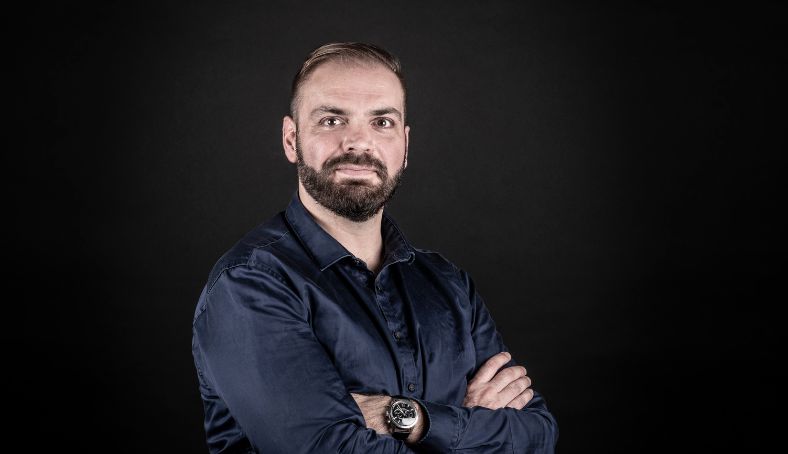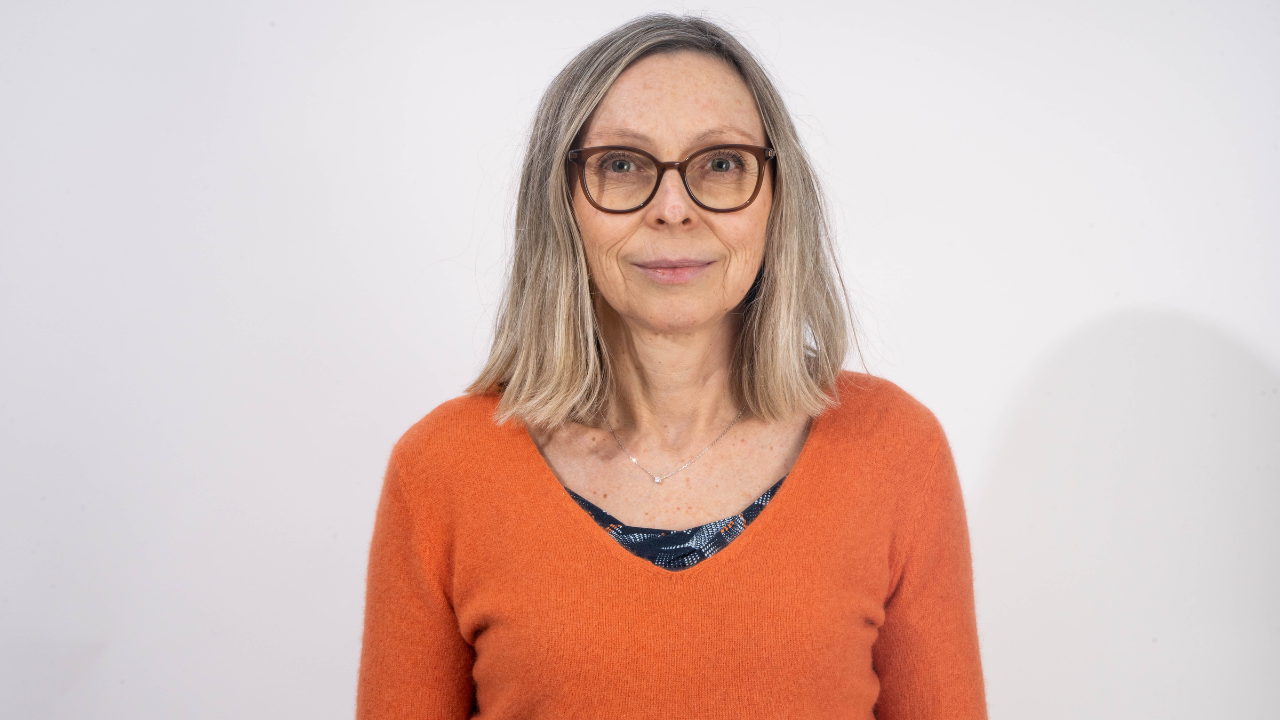
Sylvie Benzoni © Marco Perez for the Poincaré Institute
The first museum in France dedicated to mathematics, Maison Poincaré, in Paris, wishes to reconcile the public with this universal language, through a series of fun experiences. A journey to discover as a family to deconstruct old stereotypes. Maison Poincaré is also a place to celebrate the happy alliance between mathematics and the arts: being a math person is not incompatible with an artistic career, quite the contrary, as its director Sylvie Benzoni explains.
French Touch: La Maison Poincaré opened on a historic site. Could you introduce us to this place?
Sylvie Benzoni: A stone's throw from the Pantheon, it is a campus built from the beginning of the 20th century on the site of a former convent bought by the University of Paris in order to establish several institutes. Housed in the former physical chemistry laboratory of physicist Jean Perrin, Nobel Prize winner in 1926, the Maison Poincaré is next to the Marie Curie Radium Institute, built just before the 1914 war, the Oceanography Institute, the Laboratory of physico-chemical biology and the Henry Poincaré Institute of which the museum is a part.
FT: A mecca for maths where numbers dominate?
SB: It is simplistic to say that math is the science of numbers. The discipline is much broader. In the first room of the museum, we created a metro map which aims to display all the variety and breadth of mathematics as well as all the interconnections between their different fields. We can see, for example, a number district in which there is a “number theory” station on a line called “arithmetic”. There is also the shapes area since, along with numbers, this is how children enter maths. There is also the variation district, where we deal with what varies depending on time or position, a hazard district which concerns all phenomena linked to chance, and then two more mysterious districts for the public that are that of structures, extremely important in mathematics, and that of foundations, what mathematics is based on.
FT: One of the reasons for this museum is to combine mathematics with the arts. Where does this momentum come from?
SB: The Henri Poincaré Institute holds a collection of around 600 mathematical objects. These objects mostly date from the 19th century. They were designed for educational purposes so that students, particularly those from the neighboring École Normale Supérieure, could practice these geometric shapes illustrating mathematical equations. These objects later fell into disuse as other types of geometries emerged. These objects as we see them induce false ideas. Mathematicians have therefore gradually forgotten them. Until artists like Man Ray and Max Ernst rediscovered them. Their discovery by Man Ray in a forgotten wardrobe at the Sorbonne was the subject of a film in 2019, “Man Ray and the Shakespearean Equations”, in which we see an archive of the artist explaining the inspiration he found in these “equation objects”. We hear him say, in slightly clumsy French, that he likes mysteries and not so much solutions... In the end he didn't care about trying to understand what these objects mean. It was their shapes that interested him.
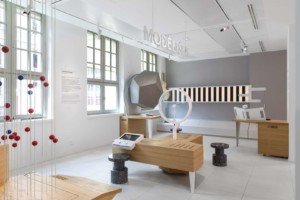
Gallery | MODELING space ©Institut Henri Poincaré, Paris / Atelier Novembre, du&ma, Thibaut Voisin
FT: However, the link between art and mathematics is not obvious. How do you illustrate this link?
SB: In the museum an entire room is dedicated to the arts. We seek to show the common approaches that there may be. For example, knot theory is illustrated here with a table of mathematical knots. Usually this theory is illustrated with string knots. Here we wanted to create like pearl necklaces, in a nod to the artist Jean-Michel Othoniel. While working on the museum project, I discovered that in his exhibition at the Petit Palais, in 2021, Jean-Michel Othoniel exhibited “wild knots” made with the help of the Mexican mathematician Aubin Arroyo and from which he inspired to make steel ball artwork. “Wild knots” are a concept in mathematics. We can clearly see here how art and mathematics can intertwine. The museum also exhibits contemporary art, such as the sculptures of Ulysse Lacoste.
FT: Why do you think it is essential to know mathematics to launch an artistic career?
SB: As soon as there are shapes, we need mathematics to understand. Some artists can completely design works without being at all aware of their mathematical representation. I am thinking, for example, of Japanese artists, represented in France by the Mingei gallery, who weave bamboo. They unknowingly create mathematical objects since these shapes must take into account the elasticity of the fiber. The theory of elasticity is very mathematical. Maths is also very close to music or even digital art. In this area I think, for example, of Marie-Paule Cani, associate and professor at Polytechnique, who has always been attracted to art. She is a pioneer in visual modeling of animated natural scenes. His motivation to contribute to mathematics therefore comes from artistic considerations. Finally, from May, the museum will present two art exhibitions: on the one hand “Intuitive Generations. When artists are inspired by mathematics”, in partnership with the Wagner gallery specializing in geometric abstraction, and on the other hand “Infra-terre. Chromatic incursion”, designed by the Mineral Collection of Sorbonne University with the artist Caroline Besse and the Henri Poincaré Institute. The connections are countless in fact!
FT: Maison Poincaré also aims to restore the image of maths even though we observe a lack of interest in French schools. What is mathematics for in life and why is it a problem to drop out of college?
SB: The visit allows a number of teachers to convey the message that math is used to learn to think and reason. Because we hold reasoning, if possible logical, and we avoid contradictions, or at least otherwise we use it to demonstrate things... So learning to think through math is really important, particularly so as not to allowing yourself to be bamboozled by “fake news” and other current scourges. There is also the fact of being more comfortable with certain calculations, but we should not reduce maths to calculation. The museum presents a series of fun devices that push us to think and realize that there is not necessarily a single solution to a problem.
FT: Math is most often seen as a chore at school. Why is it important in 2024 to change this image?
SB: I think one of the reasons is that there is a shortage of scientists in general. You cannot do science without mathematics. So we often think mainly about physics. But current biology, what we call quantitative biology, uses mathematics. There is a shortage of scientists almost everywhere in the digital world, and to do computer science, you also need to have mathematical skills. So it’s really to bring more young people to have a scientific culture in the broad sense, and in particular mathematics. That’s the challenge after all: bringing more young people into this culture.
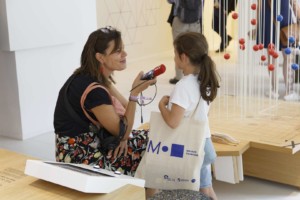
Inauguration ©Institut Henri Poincaré, Paris / November Workshop, du&ma, Laurent Ardhuin
FT: We see a lot of female faces throughout the visit. One of your wishes was that maths would be represented by women despite the lack of parity. How can young schoolgirls who visit this museum project themselves?
SB: We asked ourselves the question of what image we wanted to give of maths. We could have chosen a very historical image, based on known characters, therefore men, often white and old... This image was not retained, in favor of a more balanced and lively image. Certain historical figures are of course presented, but a lot of space has also been given to contemporary portraits, such as that of Adam Ouorou, who spent a large part of his career at Orange, or Eugenia Cheng, a British mathematician who made the choice to teach in an art school, while being a pianist. They tell in a varied context their journey, their way of arriving at maths, their ways of practicing it, so that young people in particular can say to themselves that it is possible.
FT: Today we see that confidence in science can sometimes falter in favor of ideologies. How can an institution like this help restore confidence?
SB: I tend to be optimistic and believe in youth. By welcoming as many young people as possible here, the museum helps to encourage this openness since here we show quite different maths and in a world that these young people do not necessarily suspect. Giving people a taste for math also helps them avoid falling into conspiracy theories. The enthusiasm is there. I wanted to see sparks light up in the eyes of visitors. After almost five months of opening the museum, we can say that the result is there. There are high expectations from maths teachers and school slots are full until the end of the year.
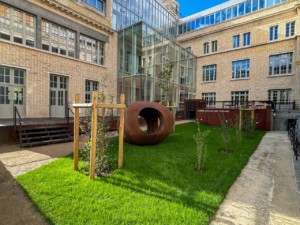
The Rulpidon, work of Ulysse Lacoste, in the Jacqueline Ferrand Garden | BREATHE space at Maison Poincaré ©Institut Henri Poincaré, Paris – Ulysse Lacoste
Similar items
- All
- Visual arts & Art de vivre
- Film & Audiovisual
- Edition
- Video games
- Fashion & Design
- Music & Performing Arts
